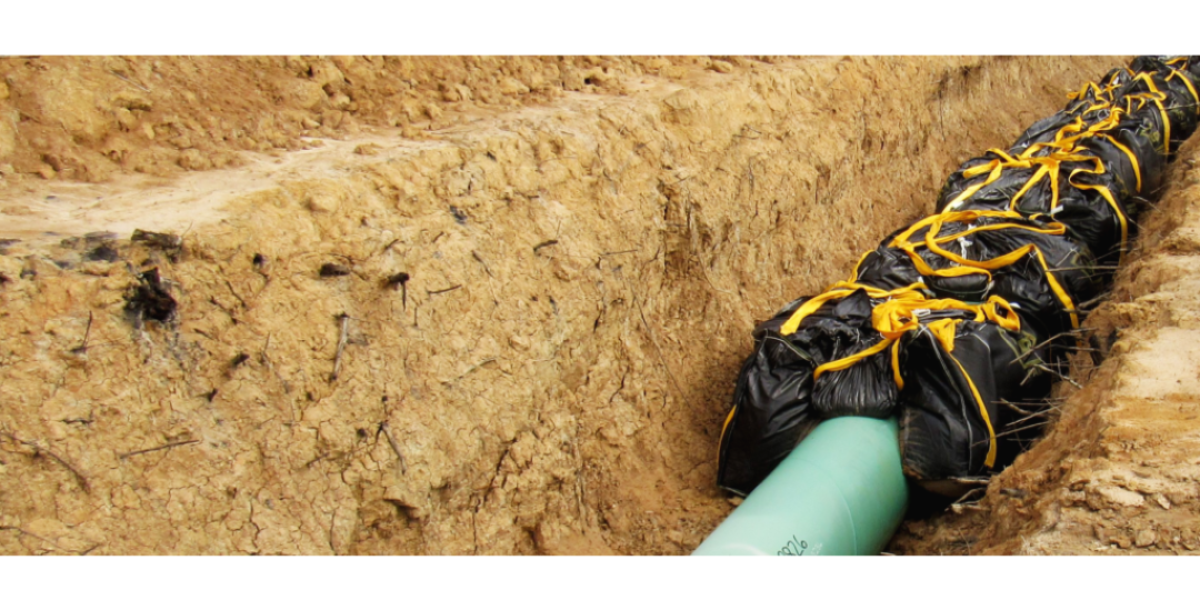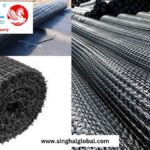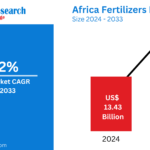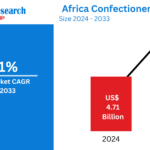Pipeline weight bags are crucial components in the construction and maintenance of pipelines, providing the necessary support and stability to pipelines in various environments. These heavy-duty bags are designed specifically to counteract buoyancy, maintain alignment, and prevent the floating or shifting of pipelines during installation and throughout the operational phase. With a range of applications—from supporting underwater pipelines to stabilizing above-ground systems—pipeline weight bags play a fundamental role in ensuring the structural integrity and safety of pipelines in various industries, including oil, gas, and water utilities. This Pulkit Plastic Products explores the features, applications, benefits, and manufacturing aspects of pipeline weight bags, as well as the important role they play in supporting infrastructure projects.
Properties and Design of Pipeline Weight Bags
Pipeline weight bags are specifically engineered to provide substantial weight to pipelines, ensuring they stay securely in place during installation and operation. Typically made from durable materials such as high-strength polyethylene or canvas, these bags are designed to resist environmental factors like UV radiation, moisture, and chemicals. Heavy-duty pipeline weight bags are often filled with materials such as sand, gravel, or concrete, which further enhances their weight and stability.
The design of these bags emphasizes easy handling and application. Many pipeline weight bags feature reinforced stitching and handles that allow for simple placement and removal. The standard size can vary, but manufacturers provide a range of dimensions to accommodate different pipeline diameters and requirements. The versatility in design is critical for a successful application, as each pipeline installation can have unique challenges depending on the environment where it is placed.
Furthermore, many pipeline weight bags are engineered to resist abrasion and impact, ensuring they can withstand harsh conditions during installation and throughout their usage. Some bags may also employ closed-cell foam technology, allowing them to provide additional buoyancy control without the risk of puncturing or leaking.
Applications of Pipeline Weight Bags
The use of pipeline weight bags extends across various sectors, reflecting their adaptability in different environments. One of the primary applications is within construction—particularly when installing water, gas, or oil pipelines. Pipeline weight bags help to keep piping in place during trenching or excavating, preventing unintended movements that could lead to alignment issues or leaks.
In marine environments, where pipelines are submerged, weight bags are indispensable. They counteract the buoyant forces in water, ensuring that underwater pipelines remain at the correct depth and position. This application is vital for maintaining the integrity of underwater pipelines that transport oil and gas across oceans or rivers. Workers utilize specifically designed pipeline weight bags for construction to help sink pipes and maintain their position as needed.
Additionally, Pipeline support weight bags can be used to stabilize above-ground pipes during installation or in areas susceptible to heavy winds. By strategically placing the bags along the pipeline, construction teams can prevent movements caused by environmental factors, thereby minimizing the risk of structural damage or potential failure.
Another important application is in temporary or emergency repairs. In situations where immediate action is needed to stabilize a pipeline following a failure, heavy-duty pipeline weight bags can be deployed quickly to secure the piping until permanent repairs can be implemented.
Advantages of Using Pipeline Weight Bags
Using pipeline weight bags offers numerous advantages, making them a preferred choice for construction and maintenance projects. One of the most significant benefits is their ability to provide immediate stability and support. By applying weight directly to the pipeline, these bags focus force in critical areas, allowing for easier alignment and secure installation.
Moreover, pipeline weight bags are cost-effective and efficient solutions. Their lightweight nature allows for ease of transport and handling, reducing labor costs and enabling faster implementation. When compared to more complex stabilization systems, such as concrete blocks or anchors, pipeline weight bags offer a simplified solution that can be adjusted quickly as needed.
The adaptability of pipeline weight bags extends to their potential for reuse. Unlike some conventional methods that may involve costly or cumbersome equipment, these bags can often be emptied, refilled, and reused across different projects. This not only saves costs but also aligns with sustainable practices by reducing waste.
Another key advantage is the reduction of environmental risks associated with pipeline installation. By ensuring that pipelines remain in position and aligned properly, weight bags mitigate the risk of leaks or ruptures that could arise from improper placement or structural failure. This preventative approach helps to protect the environment from potential damage caused by accidental spills or leaks.
Considerations When Using Pipeline Weight Bags
While pipeline weight bags offer substantial benefits, several considerations should be addressed to maximize their effectiveness. First and foremost, selecting the appropriate type of weight bag for a specific project is critical. Factors such as the diameter of the pipe, the environment in which it will be installed, and the weight requirements must all be taken into account.
Additionally, understanding the local environmental conditions can inform the selection of materials for weight bags. For instance, designs suited for underwater installations should be highly resistant to corrosion and degradation over time, while those used on land may emphasize UV resistance and durability against extreme temperatures.
Proper installation techniques are also essential for ensuring the optimal performance of pipeline weight bags. Construction teams should receive training on how to position the bags correctly and how much weight is necessary to achieve the desired stabilization without risking deformation or failure.
It is also vital to conduct regular inspections and maintenance of the bags themselves. While they are designed to be robust, wear and tear can occur, particularly in harsh environments. Ensuring that the bags are regularly monitored for damage or leakage can help avoid unforeseen complications during the installation or operational phases.
Manufacturing Process of Pipeline Weight Bags
The Heavy-duty pipeline weight bags involves several critical steps to ensure their durability and effectiveness. Initially, high-quality materials are selected based on the specific requirements, such as resistance to harsh conditions and the required weight capacity. Manufacturers often source heavy-duty polypropylene or PVC materials for constructing the outer shell of the bags, which provides strength and longevity.
Once materials are selected, the bags are cut and sewn according to the desired dimensions. Reinforced stitching is utilized to enhance durability, especially at stress points and seals. In some instances, manufacturers will include pockets for filling or internal supports to improve the overall weight distribution of the bags.
Following assembly, the weight bags are filled with the chosen materials—often sand, gravel, or concrete—using automated systems or manual labor, depending on the scale of production and desired operational efficiency. Quality control measures are implemented to ensure consistency and adherence to specifications.
Finally, the bags undergo testing to assess their weight-bearing capabilities and resistance to environmental factors. These testing procedures are crucial in verifying that the bags can withstand the intended conditions they will encounter in real-world applications.
Market Trends and Innovations in Pipeline Weight Bags
As the demand for pipeline weight bags continues to grow, several market trends and innovations are emerging to meet industry needs more effectively. One significant trend is the increased emphasis on sustainable practices. Manufacturers are exploring eco-friendly materials for constructing pipeline weight bags, including biodegradable components or recycled materials, to minimize the environmental impact.
Additionally, advancements in technology are leading to innovations in design and functionality. For example, some manufacturers are developing pipeline weight bags equipped with integrated monitoring systems. These systems use sensors to track conditions such as temperature, pressure, and moisture levels inside the bags, providing real-time data for construction teams to monitor the integrity of the installation.
Moreover, the growth of modular construction techniques is influencing the application of pipeline weight bags. As infrastructure projects embrace modular design for improved efficiency, the versatility of pipeline weight bags allows for easy integration into these innovative methods.
Companies are also increasingly recognizing the importance of training and education regarding the effective use of pipeline weight bags. By offering workshops or educational materials, manufacturers and suppliers are enabling construction teams to better understand the dimensions, weight requirements, and installation techniques necessary for successful implementation.
Conclusion
The Pipeline weight bags for construction are indispensable tools in the construction and maintenance of pipelines, offering stability and support in various environments. Their heavy-duty design, combined with ease of transport, cost-effectiveness, and reusable attributes, makes them a valuable asset across multiple industries, including oil, gas, and water utilities. By understanding the properties, applications, benefits, and innovative developments associated with pipeline weight bags, construction teams can optimize their usage and enhance the safety and integrity of pipeline installations.
As the industry evolves and embraces new technologies, the future of pipeline weight bags appears promising. Continued emphasis on sustainability, modular construction practices, and tailored solutions will expand their utility, ensuring that they remain a critical component for successful pipeline projects. By investing in high-quality pipeline weight bags, businesses can protect their infrastructure investments while upholding safety and environmental standards.
Frequently Asked Questions
1. What materials are commonly used to fill pipeline weight bags?
Pipeline weight bags are typically filled with materials such as sand, gravel, or concrete to provide the necessary weight and stability for effective pipeline support.
2. How do pipeline weight bags help prevent pipeline damage during installation?
Pipeline weight bags apply downward force on the pipeline, counteracting buoyancy and environmental pressures that can cause misalignment or movement during installation, thereby reducing the risk of damage.
3. Can pipeline weight bags be reused?
Yes, pipeline weight bags are designed to be reusable. After the completion of a project, they can be emptied, refilled, and repurposed for other applications.
4. Are there specific considerations for using pipeline weight bags in underwater installations?
Yes, for underwater installations, it is crucial to select pipeline weight bags made from materials that resist corrosion and degrade over time, ensuring that they maintain their integrity and effectiveness while submerged.












